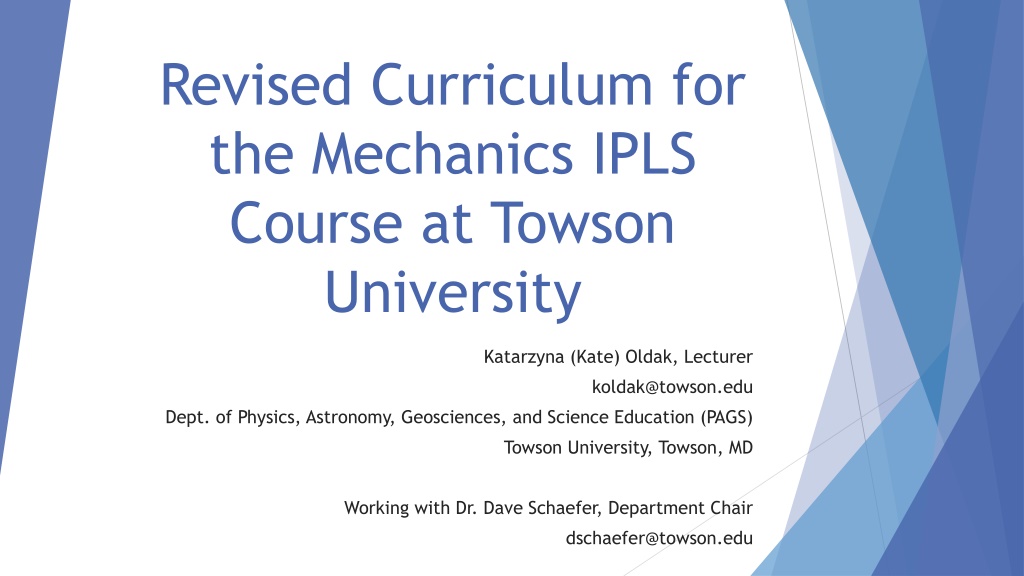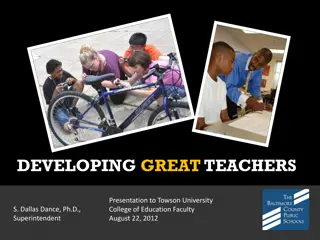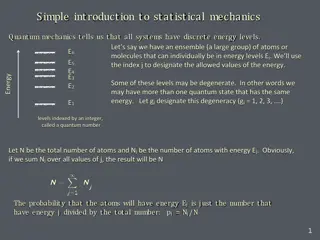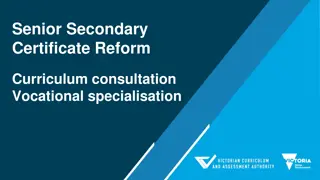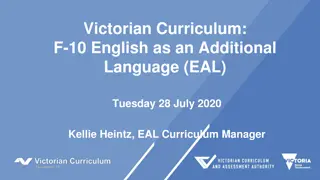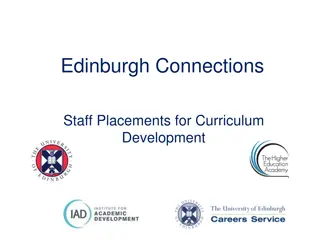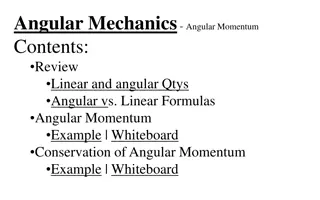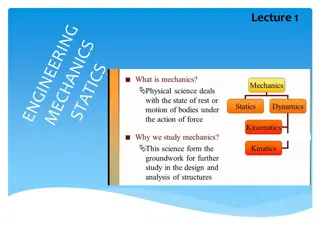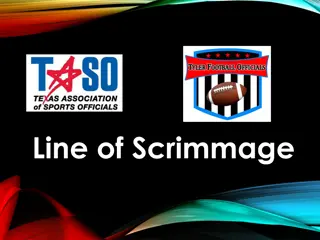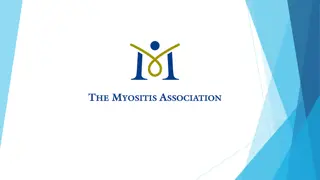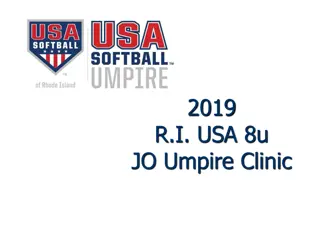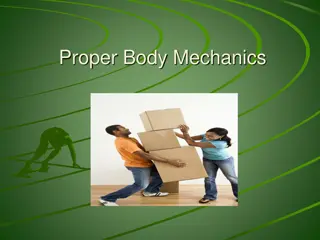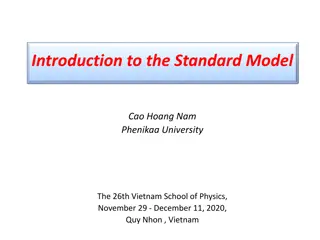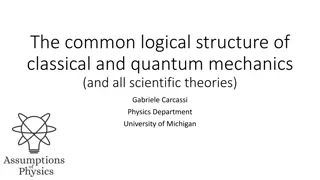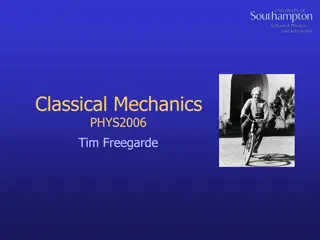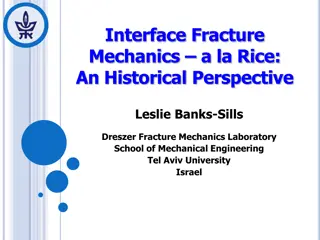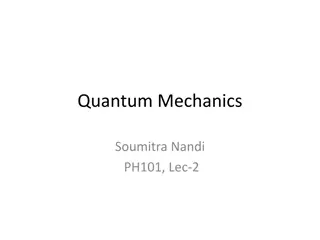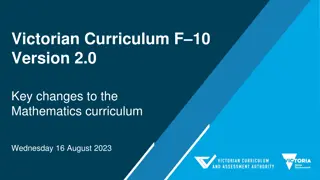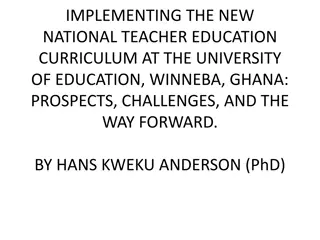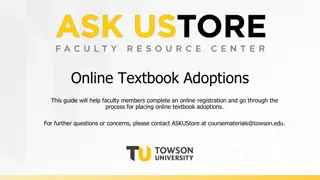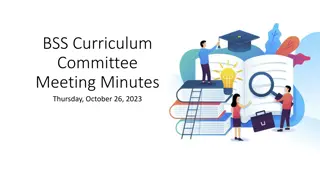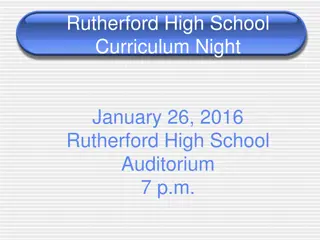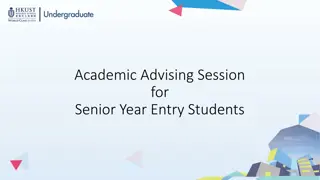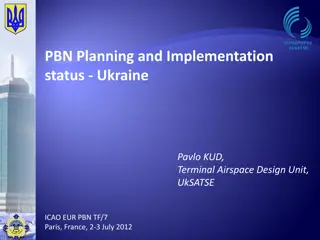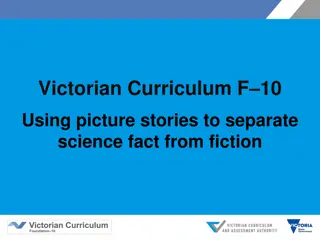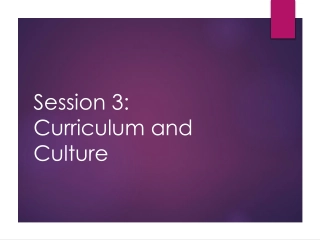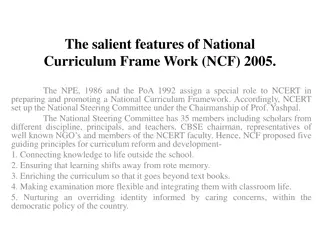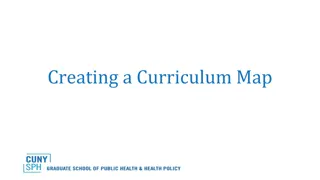Enhanced Mechanics IPLS Curriculum Implementation at Towson University
Towson University's Physics department, led by Lecturer Katarzyna (Kate) Oldak and Dr. Dave Schaefer, has revised the curriculum for the Mechanics IPLS Course. Changes include updated lecture schedules, lab manual enhancements, and in-class activities to aid problem-solving skills. New topics like drag forces, non-conservative systems, and fluids were introduced to engage students. The labs now feature diverse hands-on activities such as video analysis and experiments with air drag and buoyancy, providing a more interactive and practical learning experience for students.
Download Presentation

Please find below an Image/Link to download the presentation.
The content on the website is provided AS IS for your information and personal use only. It may not be sold, licensed, or shared on other websites without obtaining consent from the author. Download presentation by click this link. If you encounter any issues during the download, it is possible that the publisher has removed the file from their server.
E N D
Presentation Transcript
Revised Curriculum for the Mechanics IPLS Course at Towson University Katarzyna (Kate) Oldak, Lecturer koldak@towson.edu Dept. of Physics, Astronomy, Geosciences, and Science Education (PAGS) Towson University, Towson, MD Working with Dr. Dave Schaefer, Department Chair dschaefer@towson.edu
Background: What we did TU generally offers up to 12 sections (of 25 students each) of PHYS 211 (algebra-based mechanics for non physics majors) every semester We changed the lecture schedule Notes: Momentum are gravitation are out! Drag Forces, non- conservative systems, and fluids are in! We updated the lab manual We introduced in-class activities to help with problem solving We use biology related examples whenever possible Before Fall 2014 Fall 2014 and later Kinematics (1D and 2D) Problems: Unit 1 Unit 2 Kinematics (1D and 2D) Unit 1 Unit 2 Students struggle with problem solving Newton s Laws and Forces Newton s Laws and Forces (no friction) Work, Energy, Energy Conservation Circular Motion & Centripetal Force (no gravitation) Students struggle with concepts Students don t see the relevance to their own field Torque Drag Force and Contact Friction Work, Energy, Energy Conservation, Emphasis on non-conservative examples Fluids (Pressure, Buoyancy, Continuity, Bernoulli, Brownian Motion and Diffusion Unit 3 Unit 4 Linear Momentum & Collisions Circular Motion & Centripetal Force (includes gravitation) Rotation (Torque, Angular Momentum Rotational Kinematics, Rotational Kinetic Energy) Unit 3 Unit 4
How did the labs change? We went from a manual that generally had one big experiment per week to multiple of shorter hands-on activities, which let students explore and learn, rather than proving the lecture via experiment Some high-lights of the labs include: Video analysis: tracking the projectile motion of an ant that launches itself into the air Using a centrifuge to separate materials based on density Incorporating air drag into free fall using Euler s method in Excel Video analysis: tracking a small bead falling through viscous fluid
More details: Buoyancy and Viscosity Lab Students drop a small bead into Wesson oil, videotape it, and track the video to measure its terminal velocity They also calculate the theoretical terminal velocity taking into account the buoyant, drag, and gravitational forces acting it using 4 different methods before deciding which one matches data the best Image credits: http://www.slideshare.net/MidoOoz/viscosity- stokes-law
More details: Using Eulers method in Excel to analyze realistic free fall 1 2????2 Realistic free fall includes drag force ?????= Drag force changes as object speeds up and acceleration is not constant Euler s method is used to obtain subsequent position and velocity values numerically To help students use Excel throughout the semester, during the first week of class, they complete a tutorial that teaches them how to enter equations, lock cells, and repeat calculations by dragging down cells. In this lab specifically, they also receive lots of guidance from the instructors
More details: Using Eulers method in Excel to analyze realistic free fall - Results
How did we address the problem solving? Weekly in-class worksheets (done during the first hour of the lab section) to give students a chance to work on problems together before they see them on the homework Students work in groups of 2-3 to solve problems. A TA or lab instructor circles around to give hints to the groups if they need them As many examples with biology as we can come up with! (Animals for objects, traction mechanisms for forces in equilibrium, blood flow in arteries and veins, analyzing the forces and torques acting on human or animal joints) Image credits: https://cnx.org/contents/Ax2o07Ul@9.72:1wOFPGOC@8/Forces-and-Torques-in-Muscles-
Why these changes? Our changes were motivated by the work of prof. Edward Redish from Univ of MD, College Park https://umdphysics.umd.edu/people/faculty/current/item/424- redish.html#teaching Also motivated by the work of prof. Tim McKay from Univ of Michigan https://rebuild.lsa.umich.edu/ We wanted to address the problems we were seeing ourselves (students struggle with problem solving, don t see the relevance of the course, etc.) Since Fall 2014, since have seen a significant increase in students wanting to register for the physics for life science majors sections. (From spring 2015 to spring 2017, we have been offering traditional physics and physics for life science majors both listed as PHYS 211 and both taught using algebra-based methods. The traditional sections stuck to the previous lecture schedule and lab manual).
Ideas for Further Improvement Students can work in groups to find a specific way that physics relates to their field of study and present their ideas to the class by doing PPT presentations Combined lecture/lab sessions Reaching out to the biology department to ask what topics in physics would benefit students the most Anything else? Questions? We welcome any suggestions or questions, and are happy to share our materials developed so far Kate Oldak, Lecturer, koldak@towson.edu David Schaefer, Department Chair, dschaefer@towson.edu
